Incense of Music Nr. 53 - Nebbia, Parkins
Incense of Music Nr. 53
A multisensorial concert- Friday, 9th February 2023, 8 p.m.
Incense of Music is back with a highly experimental concert by a trio with Camila Nebbia, Andrea Parkins and a surprise guest.
Camila Nebbia: tenor saxophone
Knaackstr. 97, 10435 Berlin
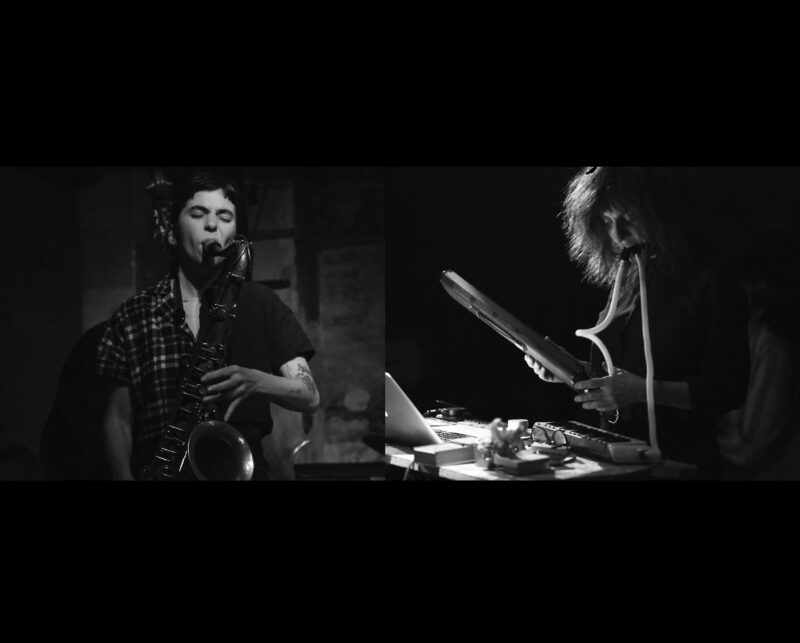
Andrea Parkins
Born: Pittsburgh, USA Lives: Berlin www.andreaparkins.com
Andrea Parkins is an electroacoustic musician, composer, and sound artist who engages with interactive electronics as compositional/performative process. Working with an array of sonic materials – electronically processed accordion, custom-built software, amplified objects, and electronic feedback – her performances and installations explore connections and slippages between the body, materiality, sound, site, and space.
Parkins’ projects include multi-channel sound performances and intermedia installations, electroacoustic solo and ensemble compositions; and sound for contemporary dance, experimental film and intermedia performance. She performs as a solo artist, and has collaborated with artists such as Ute Wassermann, Magda Mayas, George E. Lewis, Nels Cline, The Necks, choreographer Vera Mantero, and filmmaker Abigail Child, among others. Her performances and installations have been presented at venues such as the Whitney Museum of American Art, Café Oto, The Kitchen, Experimental Intermedia (NYC), Kunsthalle Basel, and Musée d’Art Moderne et Contemporain, Strasbourg. Festival appearances have included NEXT/Bratislava, Cyberfest/St. Petersburg, All Ears/Oslo, Jazz im Augusto/Lisbon, Music Unlimited/Wels, and many more.
Parkins’ recent projects include The Stray II, a site-responsive 8-channel spatial audio and visual installation that was featured at Momentum 12/The Nordic Biennale at Galleri F15 in Moss, Norway; her intermedia installation, Sonic Spaces for the Stray, presented in 2021 at ROM for kunst og arkitektur in Oslo; and her performance/installation, Two Rooms, Variation 1, for 40 loudspeakers and Solo Performer, premiered in 2016 at Akousma Festival in Montreal.
Andrea Parkins has been an invited resident artist at Rauschenberg Residency in Captiva, Florida; Elektronmusikstudion (EMS), Stockholm; Harvestworks Digital Media Arts Center (NYC); and by Frei und Hanseastadt Hamburg Kulturbehoerde. Her recordings are published by Important Records, Infrequent Seams, Confront Recordings, Atavistic, Henceforth Records and Creative Sources; and she can be heard as a contributor on numerous other labels. In 2022-2023, she is a fellow of the Berliner Förderprogramm Künstlerische Forschung / Berlin Artistic Research Grant Programme.
Recent Press:
“Sounding Objects: Andrea Parkins Interviewed by Lea Bertucci: Expanding Notions of Composition” Bomb Magazine (6 May 2022). https://bombmagazine.org/articles/andrea- parkins-interviewed/
“11+3 Interview with Andrea Parkins.” Digital in Berlin (August 2020,) https://www.digitalinberlin.de/andrea-parkins
Camila Nebbia
Camila Nebbia is a saxophone player, composer, improviser, visual artist, curator and educator debasing hierarchical systems by exploring counterpoints of migrational longing through multiple, but minimally separated, mediums. From Buenos Aires, Argentina, based in Berlin, Germany, the multidisciplinary artist layers her practice through the creation and destruction of archival memory.
Has released as a band leader and solo performer “A veces la luz de lo que existe resplandece solamente a la distancia” (Kuai 2017), “De este lado” (Club del disco 2019), Aura (ears&eyes records 2020),“Corre el río de la memoria” (ramble records 2021) and “Presencias” (Sound Holes 2021) “Una ofrenda a la ausencia” (Relative Pitch Records 2023).
Played and recorded with many artists of the international scene such as Valentin Garvie, El devenir del río, Burka, Paula Shocron, Barbara Togander, Patrick Shiroishi, Paul Pignon, Vinnie Sperrazza, Katt Hernandez, Kenneth Jimenez, Lesley Mok, Violeta García, Axel Filip, Susana Santos Silva, Tom Rainey, Elsa Bergman, l’ Arfi collective of Lyon, Joanna Mattrey, Micheal Formaneck, Vincent Dromowski’s Flow regulator, Sofia Borges, John Hughes, among others.
Co-creator and curator of the collective interdisciplinary group and improvised music series “La Jaula se ha vuelto pájaro y se ha volado”, the interdisciplinary festival “Guillotina Fest'' and creator and curator of the streaming concert series called “The warmth of proximity” and “A door in the mountain”. Runs the concert series and independent label “Disfigured Rivers” based in Berlin.
Participated of many festivals around the world such as Winter Jazz Fest NYC co-presented with M3 (U.S), Buenos Aires Jazz Festival (ARG), Lima Jazz Festival (PE), Diskurs Festival (DE), Ultima Oslo (NO), Saalfelden Jazz Festival (AT), among others, and has assisted to several residencies such as, ART OMI (NYC), SIM (NYC) Jazz & Creative Music dictated by Tyshawn Sorey and Vijay Iyer (CA), Konvent Zero (ES) UNCOOL (CH), Ensemble Evolution (US), CirkusVranen (SE), CCK with Tim Berne, Marilyn Crispell & Ben Goldberg (AR), among others.
Studied classical saxophone at the Conservatory "Astor Piazzolla", jazz at the "Manuel de Falla" Conservatory, Film Direction at the Universidad Del Cine, and the master degree program “CoPeCo Contemporary Performance and Composition at Estonian Academy of Music and Theatre in Estonia, Royal College of Music in Stockholm in Sweden, National Superior Conservatory of Music Dance of Lyon in France and Hamburg University of Music and Theatre in Germany. Was part of the second cohort of Mutual Mentorship for Musicians M3 created by Jen Shyu & Sara Serpa 2021, and was a curatorial fellow at the Experimental Sound Studio of Chicago 2022. Camila Nebbia is endorsed by D’Addario Woodwinds.
Abelmoshus
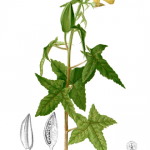 Abelmoschus is a genus of about fifteen species of flowering plants in the mallow family, Malvaceae, native to tropical Africa, Asia and northern Australia. It was formerly included within Hibiscus, but is now classified as a distinct genus. The genus comprises annual and perennial herbaceous plants, growing to 2 m tall.
Abelmoschus is a genus of about fifteen species of flowering plants in the mallow family, Malvaceae, native to tropical Africa, Asia and northern Australia. It was formerly included within Hibiscus, but is now classified as a distinct genus. The genus comprises annual and perennial herbaceous plants, growing to 2 m tall.
Abies nordmanniana
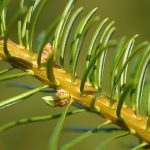 Abies nordmanniana, the Nordmann fir or Caucasian fir, is a fir indigenous to the mountains south and east of the Black Sea, in Turkey, Georgia and the Russian Caucasus. It occurs at altitudes of 900–2,200 m on mountains with precipitation of over 1,000 mm. The current distribution of the Nordmann fir is associated with the forest refugia that existed during the Ice Age at the eastern and southern Black Sea coast. Read more
Abies nordmanniana, the Nordmann fir or Caucasian fir, is a fir indigenous to the mountains south and east of the Black Sea, in Turkey, Georgia and the Russian Caucasus. It occurs at altitudes of 900–2,200 m on mountains with precipitation of over 1,000 mm. The current distribution of the Nordmann fir is associated with the forest refugia that existed during the Ice Age at the eastern and southern Black Sea coast. Read more
Acorus calamus
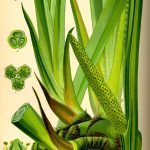 Acorus calamus (also called sweet flag or calamus, among many common names) is a species of flowering plant, a tall wetland monocot of the Acoraceae family, in the genus Acorus. Sweet flag is a herbaceous perennial, 30–100 cm (12–39 in) tall. In habit it resembles the iris, and has given its name to the flag iris, I. pseudacorus. Read more
Acorus calamus (also called sweet flag or calamus, among many common names) is a species of flowering plant, a tall wetland monocot of the Acoraceae family, in the genus Acorus. Sweet flag is a herbaceous perennial, 30–100 cm (12–39 in) tall. In habit it resembles the iris, and has given its name to the flag iris, I. pseudacorus. Read more
Agathis australis
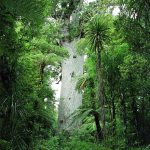 Agathis australis, commonly known by its Maori name kauri, is a coniferous tree of Araucariaceae in the genus Agathis, found north of 38°S in the northern districts of New Zealand’s North Island. Kauri forests are among the most ancient in the world. The tree has smooth bark and small narrow leaves. Read more
Agathis australis, commonly known by its Maori name kauri, is a coniferous tree of Araucariaceae in the genus Agathis, found north of 38°S in the northern districts of New Zealand’s North Island. Kauri forests are among the most ancient in the world. The tree has smooth bark and small narrow leaves. Read more
American cedar
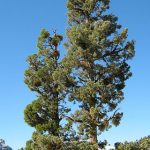 American cedar, California frankincense cedar or California river cedar (Calocedrus decurrens) is one of the four species of the genus Frankincense cedar (Calocedrus). Characteristic of this type are the elongated, annual cones made up of six scales, the Thujen-like branches and the orange, longitudinally cracked bark of older trees. Read more
American cedar, California frankincense cedar or California river cedar (Calocedrus decurrens) is one of the four species of the genus Frankincense cedar (Calocedrus). Characteristic of this type are the elongated, annual cones made up of six scales, the Thujen-like branches and the orange, longitudinally cracked bark of older trees. Read more
Artemisia absinthium
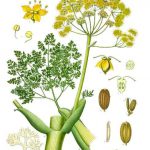 Artemisia absinthium L., common wormwood or wormwood (English: Wormwood, Greek Αρτεμισία το αψίνθιο) has its natural occurrence in the temperate regions of Eurasia and in North Africa. Although the plant is often found in Europe and it is one of the medicinal herbs cultivated in the monastery gardens for centuries, due to its rather unassuming appearance, it is not recognized by many forest walkers.
Artemisia absinthium L., common wormwood or wormwood (English: Wormwood, Greek Αρτεμισία το αψίνθιο) has its natural occurrence in the temperate regions of Eurasia and in North Africa. Although the plant is often found in Europe and it is one of the medicinal herbs cultivated in the monastery gardens for centuries, due to its rather unassuming appearance, it is not recognized by many forest walkers.
Read more
Aralia racemosa
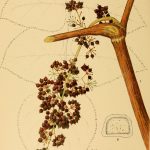 Aralia racemosa, with common names American spikenard, small spikenard, Indian root, spice berry, spignet, life-of-man, petty morel, is an ornamental plant in the family Araliaceae native to the United States and Canada. It is a herbaceous plant, about 1 to 2 m (3 ft 3 in to 6 ft 7 in) tall, which grows in shady areas. Its native range includes most of the eastern United States. The first publication of Aralia racemosa was made in 1753 by Carl von Linné. (from Wikipedia)
Aralia racemosa, with common names American spikenard, small spikenard, Indian root, spice berry, spignet, life-of-man, petty morel, is an ornamental plant in the family Araliaceae native to the United States and Canada. It is a herbaceous plant, about 1 to 2 m (3 ft 3 in to 6 ft 7 in) tall, which grows in shady areas. Its native range includes most of the eastern United States. The first publication of Aralia racemosa was made in 1753 by Carl von Linné. (from Wikipedia)
Artemisia Vulgaris
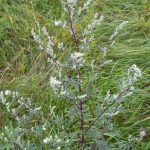 Artemisia Vulgaris (commonly known as mugwort, felon herb, chrysanthemum weed, wild wormwood, Old Uncle Henry, sailor’s tobacco, naughty man, old man or St. John’s plant ) is a tall herbaceous perennial plant growing 1–2 m tall, with a woody root, native to temperate Europe, Asia, northern Africa and Alaska.Read more
Artemisia Vulgaris (commonly known as mugwort, felon herb, chrysanthemum weed, wild wormwood, Old Uncle Henry, sailor’s tobacco, naughty man, old man or St. John’s plant ) is a tall herbaceous perennial plant growing 1–2 m tall, with a woody root, native to temperate Europe, Asia, northern Africa and Alaska.Read more
Amber (Baltic Succinite)
 Amber (from Central Low German: Börnesteen, i.e. "Brennstein") is a fossil resin that comes from an extinct plant species that has not yet been finally identified. By far the most common type of amber is succinite, of which there are estimated to be more than 640,000 t in the Baltic States.
Amber (from Central Low German: Börnesteen, i.e. "Brennstein") is a fossil resin that comes from an extinct plant species that has not yet been finally identified. By far the most common type of amber is succinite, of which there are estimated to be more than 640,000 t in the Baltic States.
Read more
Birch
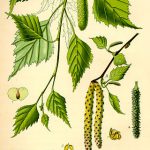 Birch is a thin-leaved, generally small to medium-sized deciduous hardwood tree of the genus Betula in the family Betulaceae, which also includes alders, hazels, and hornbeams, and is closely related to the beech/oak family, Fagaceae. They are typically rather short-lived pioneer species widespread in the Northern Hemisphere, particularly in northern temperate and boreal climates.Read more
Birch is a thin-leaved, generally small to medium-sized deciduous hardwood tree of the genus Betula in the family Betulaceae, which also includes alders, hazels, and hornbeams, and is closely related to the beech/oak family, Fagaceae. They are typically rather short-lived pioneer species widespread in the Northern Hemisphere, particularly in northern temperate and boreal climates.Read more
Boswellia sacra
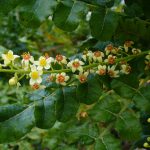 Boswellia sacra (commonly known as frankincense or olibanum-tree) is a tree in the Burseraceae family, from which frankincense, a resinous dried sap, is harvested. It is native to the Arabian Peninsula (Oman, Yemen) , and northeastern Africa (Somalia). Read more
Boswellia sacra (commonly known as frankincense or olibanum-tree) is a tree in the Burseraceae family, from which frankincense, a resinous dried sap, is harvested. It is native to the Arabian Peninsula (Oman, Yemen) , and northeastern Africa (Somalia). Read more
Cedrus deodara
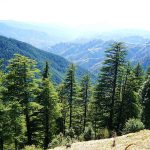 Cedrus deodara (deodar cedar, Himalayan cedar) is a species of cedarnative to the western Himalayas in eastern Afghanistan, northern Pakistan and northern India, in Tibet and western Nepal, occurring at 1,500–3,200 m (4,921–10,499 ft) altitude.Read more
Cedrus deodara (deodar cedar, Himalayan cedar) is a species of cedarnative to the western Himalayas in eastern Afghanistan, northern Pakistan and northern India, in Tibet and western Nepal, occurring at 1,500–3,200 m (4,921–10,499 ft) altitude.Read more
Cedrus libani (Lebanon cedar)
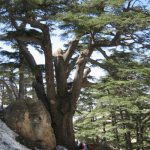 Lebanon cedar (Cedrus libani) grows mainly along the Mediterranean coast of south and southwestern Anatolia, in Lebanon, the emblem of which it is, and on the heights of Jebel Aansariye in Syria. It is an evergreen tree that can grow to heights of 30 to 50 meters and can live for over 1,000 years. The largest and oldest cedar in Germany (planted around 1720, trunk circumference 5.20 meters) is in Weinheim.
Lebanon cedar (Cedrus libani) grows mainly along the Mediterranean coast of south and southwestern Anatolia, in Lebanon, the emblem of which it is, and on the heights of Jebel Aansariye in Syria. It is an evergreen tree that can grow to heights of 30 to 50 meters and can live for over 1,000 years. The largest and oldest cedar in Germany (planted around 1720, trunk circumference 5.20 meters) is in Weinheim.

 Deutsch
Deutsch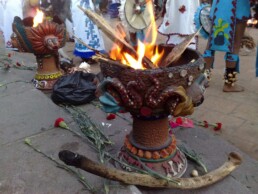
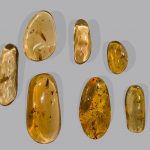 Copal is a name given to tree resin from the copal tree Protium copal (Burseraceae) that is particularly identified with the aromatic resins used by the cultures of pre-Columbian Mesoamerica as ceremonially burned incense and other purposes.
Copal is a name given to tree resin from the copal tree Protium copal (Burseraceae) that is particularly identified with the aromatic resins used by the cultures of pre-Columbian Mesoamerica as ceremonially burned incense and other purposes.